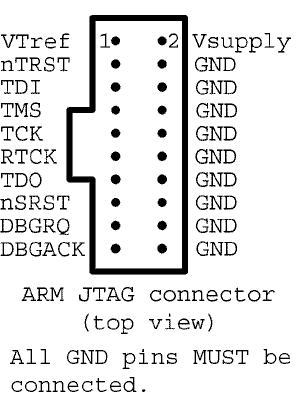Table of Contents
Flashing Olimex STM32-H103 using a Raspberry Pi
If you want to flash an Olimex STM32-H103, you don't actually need an expensive JTAG cable. The expensive JTAG cable was suggested by GNUK's README 1). Well, I decided to buy a STM32-H103 to store my OpenPGP master key, using GNUK. This is possibly the cheapest option to obtain a OpenPGP smartcard. STM32-H103 is available on Amazon for £14 2).
It might be possible to read the STM32-H103's ROM content back into the Raspberry Pi. I haven't personally tried it yet. I know the ROM is read-locked if you follow the flashing process above. However, the rumour says that is is fairly easy to do. So using a USB smartcard may not deter GCHQ / NSA from extracting your private key! I don't actually know if this is safer than storing your private key on an encrypted USB drive. However if you use a GNUK device, it is safer than storing your private key on the actual computer, and it is more convenient to use the private key than having to re-import it from a USB drive.
Pinouts
You need to connect the two devices together following the two diagrams below:
Raspberry Pi JTAG using GPIO pins |
STM32-H103 JTAG connector
|
Starting OpenOCD
sudo openocd -f interface/raspberrypi-native.cfg -f board/olimex_stm32_h103.cfg
Flashing STM32-H103
telnet localhost 4444 reset halt stm32f1x unlock 0 reset halt flash erase_sector 0 0 127 flash erase_check 0 flash write_image erase gnuk.elf verify_image gnuk.elf stm32f1x lock 0 reset shutdown
Note: You need to shutdown OpenOCD before using the GNUK device.


